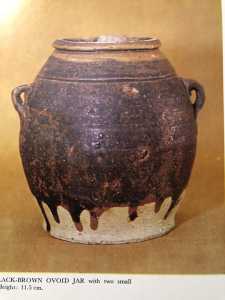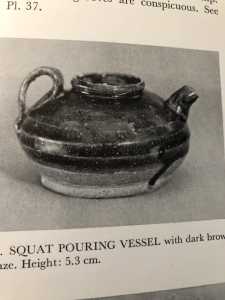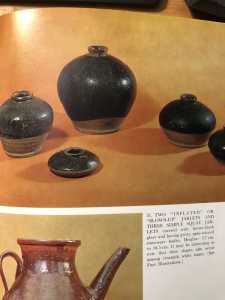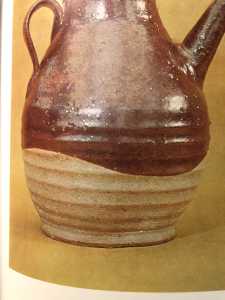The Chinese and Asian Art Forum. For Fans, Collectors and Dealers.
 Basic Rules For the BidAmount Asian Art Forum: Talk about whatever you want. You can even discuss and offer things that are for sale if they are authentic. Maximum image file size per post is 2 MB. Images of 700pxl x 700pxl are optimal if saved at a medium resolution. Be respectful of others and enjoy yourself. Click the YouTube link for a brief tutorial on using the forum. You can also EMBED Videos by cutting and pasting from You-Tube, Vimeo etc.
Basic Rules For the BidAmount Asian Art Forum: Talk about whatever you want. You can even discuss and offer things that are for sale if they are authentic. Maximum image file size per post is 2 MB. Images of 700pxl x 700pxl are optimal if saved at a medium resolution. Be respectful of others and enjoy yourself. Click the YouTube link for a brief tutorial on using the forum. You can also EMBED Videos by cutting and pasting from You-Tube, Vimeo etc.
NOTE: To post an item or add a new post, click open the category title from the FORUM LIST, and CLICK the Blue ADD TOPIC button.
@greeno107 In general I agree with your points, but there are also non-Imperial older examples that manage to still exist in a very nice state of preservation, even though less commonly seen, so that is also important to keep in mind. And not only from being in the sea, other nicely preserved pieces manage to exist. Just because it doesn't happen as frequently doesn't mean we need to throw the baby out with the bathwater by suggesting if something doesn't show significant signs of wear then it must be more modern. That is just simply not always true, which I'm pretty sure you know as well, so I'm confused as to why you would be drawing a line in the sand about it. But maybe I'm misunderstanding your position. I for one don't intend to miss out on making a great find just because the piece has too little wear if everything else about it is right. That would just make something all the more special and valuable, as we all know condition is king. (By the way I am obviously no longer speaking about my jar as this discussion has turned more general).
At any rate, this all reminds me of a shop I was in recently in that had a few very nice 18th c armorial plates/bowls from the same service. Two of the objects had significant wear to the enamels, especially the central design, but one of them was in absolutely perfect condition, as though it was brand new and seemed untouched. Obviously some of the service had been well used but some had not been used at all or very little for nearly 300 years. Personally, I am constantly amazed at how some of these fragile objects we collect have survived so long and sometimes in fabulous condition. At any rate, like every other aspect, wear is one important factor to consider when assessing a piece, but does not override a complete assessment that factors in all relevant components.
"but there are also non-Imperial older examples that manage to still exist in a very nice state of preservation, even though less commonly seen, so that is also important to keep in mind. And not only from being in the sea, other nicely preserved pieces manage to exist. Just because it doesn't happen as frequently doesn't mean we need to throw the baby out with the bathwater by suggesting if something doesn't show significant signs of wear then it must be more modern. That is just simply not always true, which I'm pretty sure you know as well, so I'm confused as to why you would be drawing a line in the sand about it. But maybe I'm misunderstanding your position."
I'm not suggesting you 'throw out the baby with the bath water'. I am suggesting that there is a case, perhaps more strongly, that your jar is not Song... and I have given you my explination - take it or leave it. The arguments so far posted in support of your jar being Song dynasty do not appear to be very strong (you're welcome to disagree).
I am most certainly not drawing a line in the sand over your brown jar, nor suggesting it is modern, but that modern pottery exhibit similar traits, and thus, can not be ruled out.
As far as my methodolgy - many have taken issue with my stictness, pointing to one exception or another as proof that the bar for authenticity that I hold should be lowered. Well, permit me to respond.
Justifying one's opinions on authenticity by holding fast to the belief that there are 'exceptions to the rule' with regards to authenticity, in lieu of the solid evidence provided by known examples, is not a practice I would recommend for anyone who aspires to building a collection of Chinese porcelains if they hope that one day, it will be appreciated by other collectors. Even major museums, over time, have come to find that examples once thought to be of the period, turned out to be more modern.
You're free to choose whatever methods of authentication you wish.
I personally do think this is Asian, probably Chinese, just from the form, especially the treatment and trimming of the foot where it juts out form the body (below are some examples from "Oriental Ceramics Deiscovered in the Philippines). I don't necessarily think its Song, as there were and still are a ton of kilns that produced these a Bajillion brown glazed utilitarian wares, the main span is probably Late Yuan to middle of the 19th century, for that one I'd think Fujian Kiln system is a good place to start. As for the issue of wear, to be honest I shy away from these sorts of pieces if there is none whatsoever, since the chance that its old is far slimmer.... that said, these were often used for a single use, to transport a tea or a fish paste/ sauce and then discarded, so very little shelf wear. The glaze is quite durable and so it doesn't really show if it lived out 200 plus years in a trash pit. I recall a thread on gotheborg where they were in Indonesia and pulling nearly pristine Fujian brown and white( I think) wares out of the ground, all Yuan/Ming. Of course there was grime and dirt and mineralization in cracks and fissures, but overall once soaked and cleaned, you really couldn't tell. So is it Song or Ming or Qing, very hard to say, but I am fairly certain it is Asian.
Just my two cents...
Jeremy
P.S. I am pretty sure there are still kilns that make these for storage purposes, mostly domestic, and so it could well be modern... Also just as a side note the glaze can be just about any shade of brown, literally jet black to light yellow.
@jbeer2121 It seems these are universally challenging to date given their long history. After looking at different options, including Tim's suggestion that it is American made, I'm of the opinion it is Asian and examining it more closely it looks to have some good age, but how much age i lack the expertiseto tell. Particularly this age shows under magnification that reveals more detail that at a glance and from a distance is hard to see, especially on this color of glaze.
@greeno107 I think you might at times be confusing "strictness" with rigidity. I also think at times you are confusing "lowering your standard" with being more open--minded. But as you said, we are all free to choose whatever methods of authentication we wish. In the end, we are all just trying to help each other, so maybe you push a little too hard in your direction while I might push too hard in the other, because perhaps both of us feel the other needs a bit of balancing out. I'm sure the exercise is making both of us more keen in our collecting, so for that I am grateful. Cheers!
@johnshoe "I think you might at times be confusing "strictness" with rigidity. I also think at times you are confusing "lowering your standard" with being more open--minded."
Very constructive, John - nice.
If you go back to my original post, you'll see I critqued your piece, not you. Apparently, if someone disagrees with you, you can't help yourself to lob personal jabs, and this is far from the first time you've taken a swing at me, not just my opinions.
Good luck with your jar.
@greeno107 I think you have a pretty one-sided perception of the exchange. You definitely were critiquing my methods as well, which is fine actually. I can take some of that if it is well intended, which I assumed it was coming from you. I don't always agree with you, but i definitely respect your opinions and always give them consideration. Critisims can help us grow. Sorry to hear you are taking the exchange so personally and harboring resentments. For what it's worth I am not harboring any against you.
Thanks for visiting "The BidAmount Asian Art Forum | Chinese Art"
If you sell on eBay, or have a shop feel free to post images and descriptions and links.
Check back often for discussion about the latest news in the Chinese art and antique world. Also find out about the latest Asian art auctions at Sotheby's, Christie's, Bonhams and Tajans.
Auction results for: fine porcelain, ceramics, bronze, jade, textiles and scholar's objects. As well as Japanese, Thai, Vietnamese and other Asian cultures.
Thank you,
Peter Combs
Topics and categories on The BidAmount Asian Art Forum | Chinese Art
Kangxi vases, Kangxi dishes and chargers, Kangxi ritual pieces, Kangxi scholar's objects, Qianlong famille rose, Qianlong enamels, Qianlong period paintings, Qianlong Emporer's court, Fine porcelain of the Yongzheng period. Chinese imperial art, Ming porcelain including Jiajing, Wanli, Xuande, Chenghua as well as Ming jades and bronzes.
The BidAmount Asian Art Forum | Chinese Art
A free Asian art discussion board and Asian art message board for dealers and collectors of art and antiques from China, Japan, Korea, Thailand, Cambodia, Vietnam and the rest of Asia. Linked to all of the BidAmount Asian art reference areas, with videos from plcombs Asian Art and Bidamount on YouTube. Sign up also for the weekly BidAmount newsletter and catalogs of active eBay listing of Chinese porcelain, bronze, jades, robes, and paintings.
The art of calligraphy - and for the ancient Chinese it certainly was an art - aimed to demonstrate superior control and skill using brush and ink. Calligraphy established itself as one of the major Chinese art forms during the Han dynasty (206 BCE - 220 CE), and for two millennia after, all educated men were expected to be proficient at it.
The Museum’s collections of Asian art span nearly five millennia and encompass the cultures of China, the Himalayas, India, Japan, Korea, and Southeast Asia. In 2007, the Museum launched an initiative to create dedicated galleries for the collection, beginning with a gallery for the arts of Korea ...
Chinese art is full of symbolism, in that artists typically seek to depict some aspect of a totality of which they are intuitively aware.
China Online Museum is the finest online museum of Chinese art. It features Chinese calligraphy, painting, ceramics, bronzes, carving, and other artworks.
Chinese Ceramics & Works of Art. Overview Upcoming auctions Contacts Auction results ... Christie’s sales of Chinese ceramics and works of art showcase centuries of Chinese history. Held throughout the year in London, New York, Paris and Hong Kong, they attract a wide audience of collectors and connoisseurs vying for pieces as diverse as ...
Explore Asian Art Week. Contact the Specialist Department. Chinese Paintings ... Senior Specialist, Head of Sale. [email protected]. Tel:+1 212 641 5760. Bid in-person or online for the upcoming auction:Fine Chinese Paintings on 10 September 2019 at New York. Bid in-person or online for the upcoming auction:Fine Chinese Paintings on 10 ...
Discover an abundance of must-see art from all corners of a vast continent at Christie’s NY Asian Art Week. From contemporary classical and Chinese paintings to works with exemplary provenance from the Art Institute of Chicago, our Rockefeller Paza galleries will be full of ancient treasures and contemporary masterworks in a salute to the vibrant arts of Asia.
Sold to benefit The Art Institute of Chicago’s Asian Art Acquisition Fund, the sale features 84 lots with a focus on Ming and Qing porcelains, and offers a rare insight into the taste for collecting Chinese ceramics and works of art in the Midwest from the end of the 19th century through the 1980s. Highlights include two Wanli wucai garlic-head vases, a Qianlong mark and period, blue and ...
Specialist, Chinese Paintings, Christie's London Dr Malcolm McNeill is a Specialist in Chinese Paintings at Christie’s, based in London. He previously worked as an assistant curator of the Chinese collections and the Victoria and Albert Museum in London, as a researcher at the British Museum, and as a translator and tour guide at the National Palace Museum in Taipei.
The Christie's Education 2020 Conference: The Chinese Art Market 18 Jun 2019 Christie’s Education is delighted to announce our first international academic conference in Asia which will take place in Hong Kong from 26-27 November 2020 at the Hong Kong Convention and Exhibition Centre and will run in parallel with Christie’s Hong Kong Autumn Auctions.
The summer Chinese Art sale in Hong Kong will feature works of art from several private collections, including Qing porcelains and textile from the collection of the legendary Chinese art dealer A. W. Bahr (1877–1959), fine gilt bronze Buddhist sculptures from an old Hong Kong collection, an East Asian collection of Qing dynasty wine cups and jades, and a Japanese collection of Song ceramics ...
Sotheby's Chinese Works of Art Department holds two auctions each year in London, New York, Hong Kong and Paris.
Chinese Art - View Auction details, bid, buy and collect the various artworks at Sothebys Art Auction House.
With more than 340 Chinese works of art dating from the Neolithic to the Republic periods, highlights of this sale include a selection of Qing Imperial monochromes from the collection of Arnold and Blema Steinberg, early ceramics from the Art Institute of Chicago and Chinese porcelain and works of art from the collection of Henry Arnhold.
Results: Sotheby's Asia Week achieved $52.4 million in six strong auctions, exceeding pre-sale estimates. With 76.5% of lots sold and 60.3% of lots surpassing high estimates, the Asian art sales at Sotheby's indicate continued collector interest in the finest works of art from China, India and and the Himalayas.
Today's sale of Important Chinese Art will proceed as planned with sessions at 10 AM and 2 PM EDT. Sotheby's will be monitoring the weather conditions throughout the day and will be available to coordinate alternative bidding options should conditions make it difficult for clients to attend the auction in person.
Bonhams Chinese Art department is renowned for offering the finest works of art representing the richness and breadth of China's artistic heritage, particularly Imperial porcelain, white and spinach green jades, cloisonné and Buddhist art. Specialised international auctions are held globally, including London, Hong Kong and San Francisco.
Bonhams : Chinese Works of Art We use cookies to remember choices you make on functionality and personal features to enhance your experience to our site. By continuing to use our site you consent to the use of cookies. Please refer to our privacy and cookie policies for more information.
Bonhams Fine Art Auctioneers & Valuers: auctioneers of art, pictures, collectables and motor cars. We use cookies to remember choices you make on functionality and personal features to enhance your experience to our site. By continuing to use our site you consent to the use of cookies. ... Chinese Art (US) General enquiries
Bonhams : Fine Chinese Art We use cookies to remember choices you make on functionality and personal features to enhance your experience to our site. By continuing to use our site you consent to the use of cookies. Please refer to our privacy and cookie policies for more information.
Bonhams Fine Art Auctioneers & Valuers: auctioneers of art, pictures, collectables and motor cars Bonhams : Asian Art We use cookies to remember choices you make on functionality and personal features to enhance your experience to our site.
Bonhams are international auctioneers of fine Chinese and Japanese art. We specialise in rare Imperial and Export Chinese ceramics and works of art, as well as Japanese ceramics, fine and decorative works of art from the Neolithic Period to the 20th century. View on map
Bonhams Fine Art Auctioneers & Valuers: auctioneers of art, pictures, collectables and motor cars. We use cookies to remember choices you make on functionality and personal features to enhance your experience to our site. By continuing to use our site you consent to the use of cookies. ... Asian Art Bonhams. Work. 22 Queen St.




